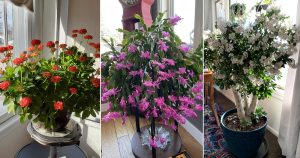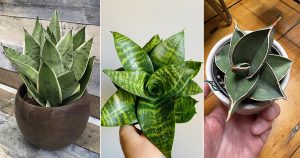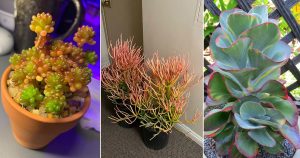Everybody needs friends, even succulents! So why not grow these herbs with succulents and enjoy the best of both worlds!
Companion plants are grown together to help each other benefit from the physical traits of one another. Certain herbs make great fellow plants to fleshy succulents, so growing them alongside will be a win-win situation. Try these best herbs you can plant with Succulents in your garden, and you’ll be surprised!
Herbs You Can Plant with Succulents
1. Rosemary

Botanical Name: Salvia rosmarinus
Rosemary and succulents are like two peas in a pod as both have similar drought tolerance and water needs. You can identify this tall herb (up to 4 feet) due to its needle-like leaves that are green on top and silver underneath, and therefore, it complements the beauty of succulents with added charm of its own.
Salvia Rosmarinus thrives in well-drained soil with full sunlight and can tolerate dry conditions. It’s a hardy plant that also adds a wonderful fragrance to any garden.
Note: Rosemary’s aromatic leaves can also help repel pests that might otherwise bother your succulents.
2. Sage

Botanical Name: Salvia officinalis
Sage is a guardian angel for succulents, as its camphor-scented flowers, which resemble lavender blooms, repel pests that may otherwise harm the succulents. This herb is known for its extremely aromatic, soft, gray-green leaves with a velvety texture, making it a perfect addition to cuisines either fresh, dried, or cooked. A cool fact about this herb is that its botanical name comes from Latin, meaning “to heal,” as it is said to be useful in treating skin and respiratory disorders.
If you wish to grow this herb, try planting it in well-drained soil and in a location where it is exposed to full sun to partial shade. Pruning sage regularly will help it grow bushier and maintain its shape.
3. Thyme

Botanical Name: Thymus vulgaris
Believed to be an emblem of bravery during medieval times, Thyme makes a good buddy to succulents as it requires minimal water and shares identical growing conditions, so you’d get two at the price of one. Thyme is known for its iconic tiny, dark green leaves and can form a low, dense mat up to 12 inches tall. It can also shoo away grazers like deer due to its overwhelming scent.
Thyme thrives in well-drained soils, especially dry, sandy, or rocky soils, and prefers full sun. It’s a versatile plant that emits a pleasant scent when touched.
4. Oregano

Botanical Name: Origanum vulgare
Want to enjoy a flavorful pizza while admiring your succulent collection? Add Oregano to the collection as well! This herb can be planted with succulents, as it has low water needs and pest-resistant properties. This herb has small, oval leaves that are green and slightly fuzzy, and it can add beauty due to its showy pink or white two-lipped blooms. Try harvesting the leaves just prior to the blooming, as that’s when they are at their best!
Oregano loves low water conditions but thrives in well-draining soil and with full sun exposure. Regularly harvesting oregano leaves will promote new growth and keep the plant healthy.
5. Marjoram
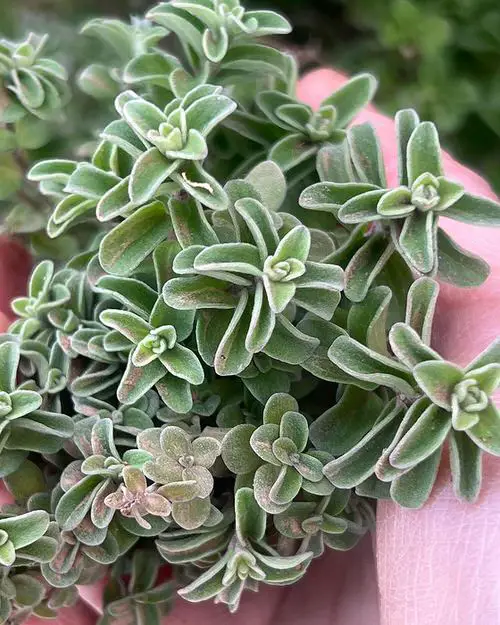
Botanical Name: Origanum majorana
Marjoram is that herb that fits in perfectly with any kind of friend circle! It has no problem being grown alongside celery, corn, eggplant, onions and herbs like basil, chives and oregano. It also shares the same adaptability with succulents as they too are heat and drought tolerant. This herb whose taste reminds many of a milder version of oregano has small, oval, hairy green leaves that can be smelt from a mile away.
The best conditions for Marjoram are well-drained alkaline or neutral soil along with 6 hours of full sunlight.
6. Lavender
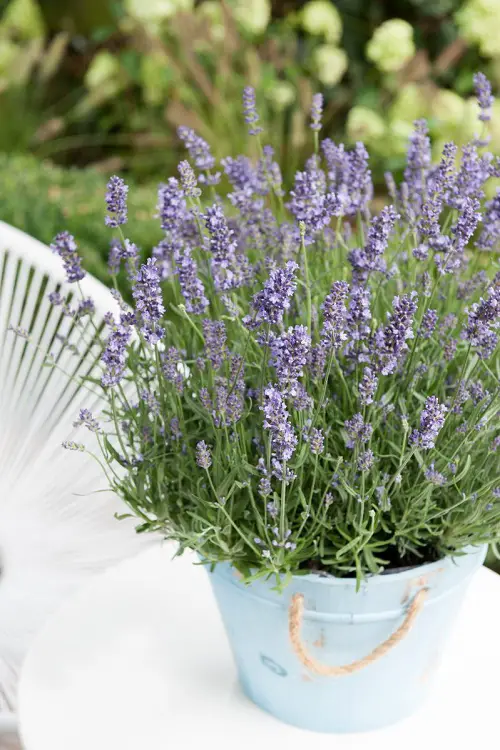
Botanical Name: Lavandula angustifolia
Now, talking about herbs, we can’t forget Lavender, can we? This world-renowned herb and succulents are like Bonnie and Clyde as they are both drought-resistant and prefer arid environments. Succulents may lack the beauty of flowers but growing lavenders alongside can compensate by their long, slender stems topped with purple flowers that attract tons of pollinators as well. Almost the entirety of the plant is fragrant, which makes it a main ingredient in oils, soaps, and potpourri.
7. Chives
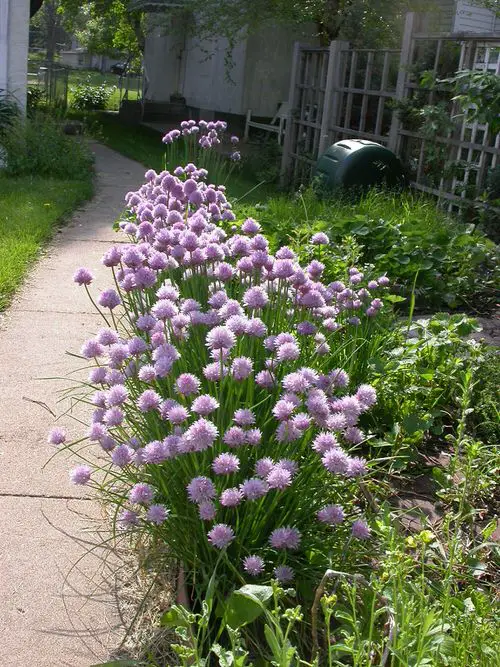
Botanical Name: Allium schoenoprasum
Chives are bulbous perennial herbs that pose no harm to succulents if planted with them. On the contrary, these herbs are said to have pest-repelling properties. You can spot a chive by its thin, hollow green stems. They can grow up to 18 inches tall indoors and significantly taller in the wild. Chives are known for having slightly bitter leaves that are used in soups and other dishes.
If you choose to grow your chives along with your succulents use a moist and well-draining potting mix and place it in a location where it receives both full sun and partial shade.
8. Yarrow
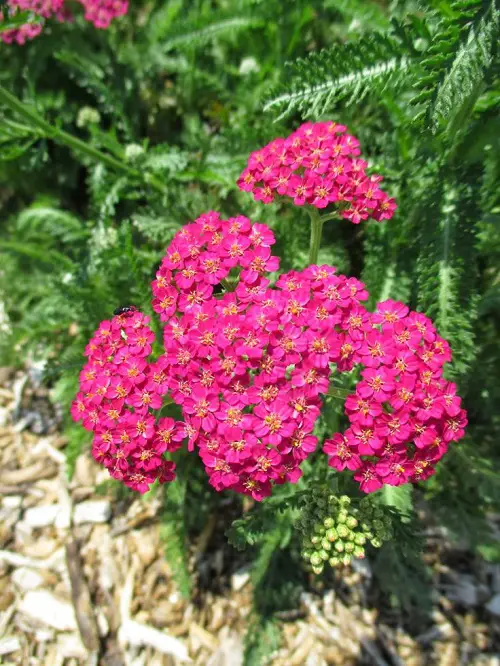
Botanical Name: Achillea millefolium
Yarrow is a magical herb used by Native Americans to treat fever, rashes, and hemorrhages. So, if you, too, want to capitalize on its healing properties, you don’t need a separate space, as they love the company of succulents. This herb, famous for its bitter fern-like leaves and clusters of small, white, or yellow flowers, is said to be named after Achilles, who allegedly used this plant to treat his wounded soldiers.
Yarrow is a hardy plant that does well in well-drained, neutral pH soil and full sunlight.
Note: Yarrow attracts beneficial insects like ladybugs and lacewings, which help control pest populations.
9. Catmint
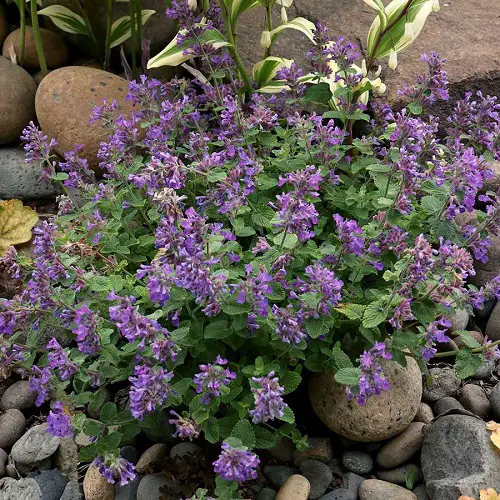
Botanical Name: Nepeta cataria
It’s time to hold on to your feline friends, as the Catmint may love the company of succulents, but cats also love it! It benefits succulents as it shoos away pests like aphids, cabbage looper, Colorado potato beetle, cucumber beetle, flea beetle, Japanese beetle, and squash bugs that may pose harm to succulents. The trademark characteristics of this herb are its soft, silver-green leaves and spikes of lavender-like flowers that may reach heights of up to 3 feet tall.
If you choose to grow Catmint along with your succulent you must beware of its rapidly spreading ability, so pots with well-drained soil are the best option and remember to pinch it regularly. Also remember it needs both full sun and partial shade to produce the best results.
10. Purslane
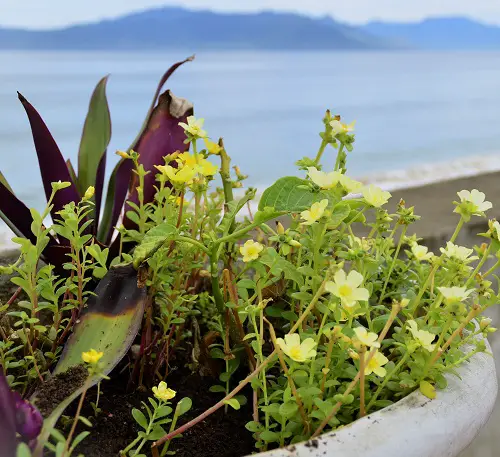
Botanical Name: Portulaca oleracea
We have saved the best one for the last! Purslane is a fast-growing herb with succulent leaves and stems. Even its tiny seed leaves are succulent. The smooth, reddish stems spread out to form a mat up to 3 feet wide. This herb is popular for its fleshy, spoon-shaped leaves and small, yellow flowers. Purslane is not only a tough, drought-tolerant plant but also a nutritious edible herb packed with omega-3 fatty acids.
Purslane thrives in well-drained soil and can grow in full sun to partial shade. It’s a low-maintenance plant that can spread quickly, so consider growing it in a pot to control its growth.
Did you know? Purslane has a toxic look-alike called prostrate spurge (Euphorbia maculata). To tell them apart, break the stem. Prostrate spurge will have milky sap, but common purslane will not.
That’s it From Our Side!
Now that you know the best herbs you can plant with succulents, why not give it a try? These combinations will not only make your garden more beautiful but also create a healthier environment for your plants. Have you tried growing any of these herbs with your succulents? We’d love to hear about your experiences and any tips you might have. Share your stories in the comments below and let’s learn together!


